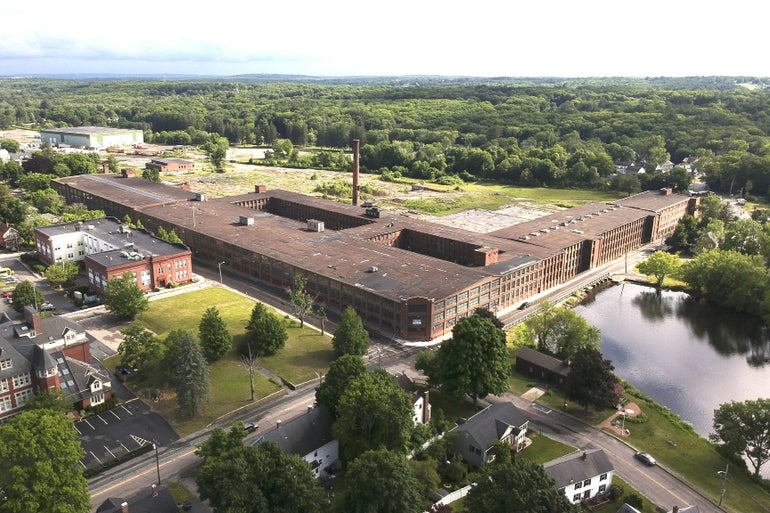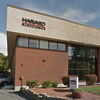Old mill presents opportunity & obstacle to the new Hopedale
The Draper mill has been festering vacant for 40 years, a 1-million-square-foot building on a 100-acre property dominating the center of Hopedale.
The property is both a tie to the town's manufacturing past and – for better or worse – a vital part of its future, as town officials are pushing for new development to transform the Hopedale economy and revitalize its downtown.
After 28 years of the current owner letting the building remain stagnant, Hopedale town officials are now considering drastic action to accelerate any kind of movement on the property. The town formed an Urban Renewal Committee earlier this year to develop a plan to address the mill and several other aging properties, including Town Hall and the library.
“We're taking very aggressive action right now to determine what our options are going forward,” Selectman Tom Wesley, who's leading the urban renewal push that began in earnest in February.
An economic engine
The Draper Corp. – once the largest manufacturer of textile looms in the country – and its mill once fueled the Greater Hopedale economy. Hundreds of housing units were constructed for workers, including those still in town today.
At one point, the company accounted for more than half of the town's tax revenue.
In its heyday, the factory employed more than 3,000 people before it closed in the 1970s after technology advances made textile looms obsolete.
Nearly half a century after it closed in 1979, the small town of about 6,000 relies on residents to pay about 90 percent of the town's taxes.
Now, industrial or commercial activity is hard to come by in the small town.
Because of its size and prominence, the opportunities at Draper mill to contribute to a remade Hopedale economy are endless: a boutique hotel, office space, apartments condominiums. There has even been talk of extending the MBTA's Franklin line to Hopedale, but nothing has ever materialized.
Selectmen Lou Arcudi said his father and grandfather worked in the mill, so seeing it torn down or renovated would erase part of the town's history, but the town is desperate for tax revenue.
“It's really tough to get money, so we burden our [residential] taxpayers,” said Arcudi.
The building is in a state of disrepair, though Worcester-based First American Realty – the owners – have taken steps to clear the building of environmental hazards.
30 years & no new development
Philip Shwachman, president of First American Realty, has owned the property via various entities for about three decades. He said two years ago he wanted to be free of the building and find a buyer, but nothing has changed since.
“I've heard of no substantiated rumor or caught no wind of any potential developer on the horizon,” Wesley said.
Shwachman could not be reached for comment for this story.
In a 2013 interview with WBJ, Shwachman said the once defunct Grafton & Upton Railroad – which has since changed ownership and has been operational for five years – could help bring new life to the mill, but added any developer would need a wealth of experience and access to capital.
“It's a viable railhead now,” Wesley said.
The town has begun working to establish a local historic district to sync up with the efforts of the Blackstone Valley National Corridor. Shwachman's property was included in the district, a move he in May said would make any future Draper mill redevelopment impossible.
A town committee eventually gave in to Shwachman's request and removed the property from consideration.
Despite relinquishing on the historic district, the level of frustration among town officials with the inactivity at the property is nearing its limit, Wesley said.
Options to get any kind of activity going could include a private transaction between Shwachman and a developer, a public-private partnership, or other less-attractive options like eminent domain, he said.
“There's a lot of potential in that area,” said Town Administrator Steven Sette. “It's a matter of harnessing that and coming up with the right plan for the town.”
The newly formed Urban Renewal Committee is hoping to pick up where officials left off about a decade ago.
Old plans revived
For about three years starting in 2005, the Draper Reuse Committee held regular meetings with the public, Shwachman, and state and local officials to come up with resources to jumpstart a project.
That group even facilitated visits from then Gov. Deval Patrick and federal officials.
“We had the green light to go ahead,” said Selectmen Lou Arcudi, saying a redevelopment project was just a few months and a few signatures from becoming a reality.
Then, the economy crashed, grant money dried up, and private partners took a step back.
Before the Draper Reuse Committee stopped meeting, the group was working off of a 2007 report from Boston-based Concord Square Development highlighted a mixed-use type of project, with possible housing, education, medical and retail uses.
Now, that report is resurfacing as the town looks to make another effort not only at revitalizing the massive building, but the entire downtown area.
Deep pockets and a vision
When told the town was going the route of an Urban Renewal Plan, Ted Carman, president of Concord Square Development, called it a good idea.
The real difficulty with the site, Carman said, is the need for somebody with deep pockets and a massive line of credit to finance a potentially $300-million project. Because it is so large, the property is limited in how much state historic tax credits could help with a new development, as the 20-percent credit is capped at $50 million.
Since the space is so massive, just one use would not able to support a potentially $300-million project, he said. A developer would need a combination of the various ideas over the years – hotel, office space, apartments, medical, retail – to make it financially viable.
“It's going to take someone with a real imagination,” Carman said.











0 Comments